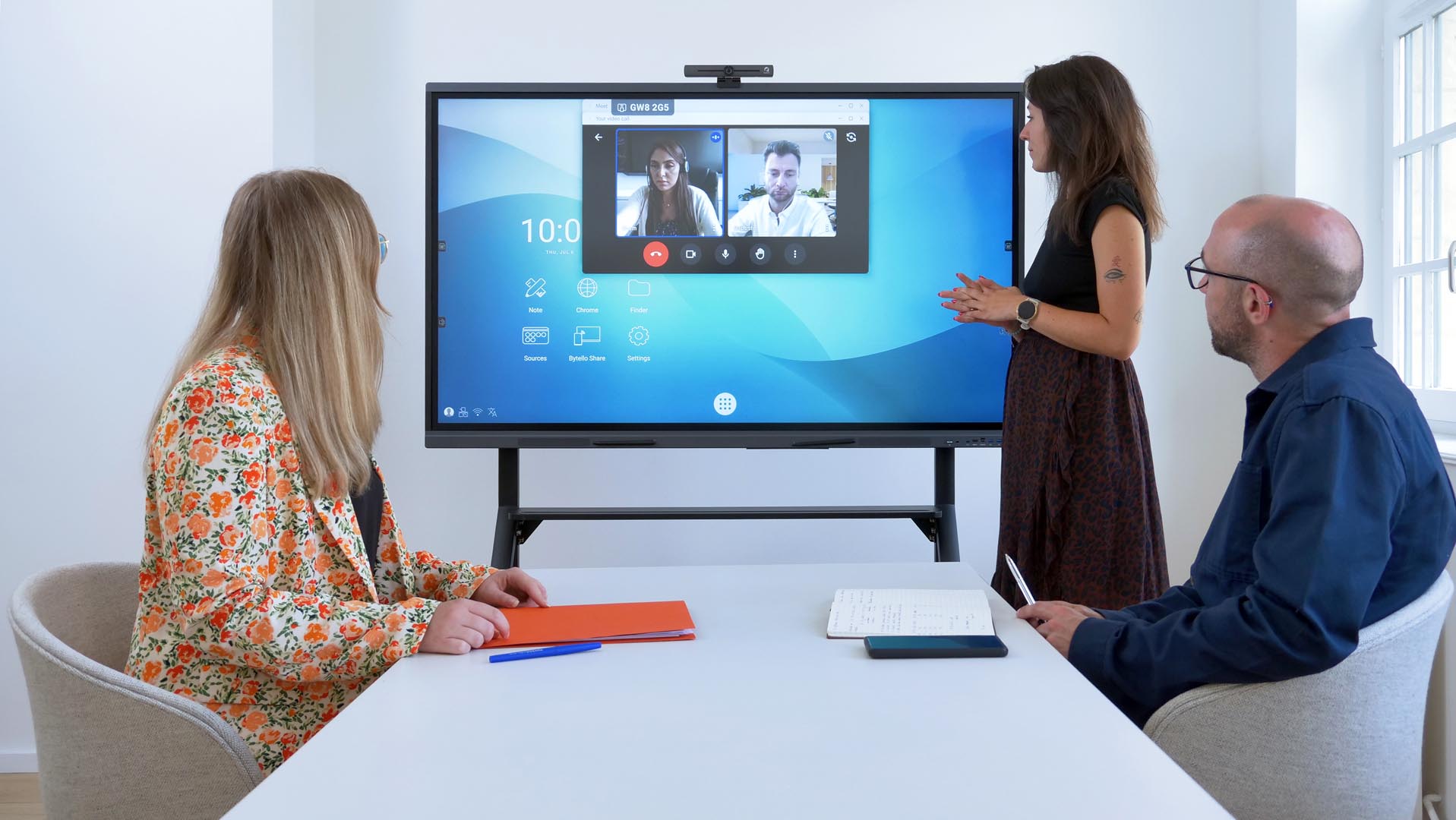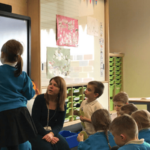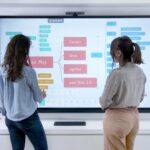Learn about the factors you need to keep in mind when identifying the best smart whiteboard for your classroom or educational institution.
With interactive whiteboards available in dimensions ranging from 43” to 98”, choosing the right interactive whiteboard for education and teaching can prove to be a tricky task. This is why we have formulated this article with practical information and recommendations on what to think about when choosing the right digital whiteboard for your needs.
We recommend considering two main factors when picking the best interactive whiteboard – its intended environment, and the intended audience. By ‘intended environment’, we mean the space it will occupy, and its dimensions. Here, the term ‘intended audience’ includes teachers and pupils, since everyone is likely to interact with the screen at some point.
The environment – classroom dimensions

When choosing interactive whiteboards for a school, it is important to take classroom dimensions and class-size into consideration. The depth and width of the room, along with the classroom seating plan, will determine which screen-size is best for your students.
As a general rule, for a standard classroom – which is 6m in depth and can accommodate around 30 students – a 75-inch screen is likely to be the best option for your needs. If the classroom is less than 6m in depth, a 55-inch or 65-inch screen would be better. If your classroom is larger than 6m in depth, however, it is better to opt for an 86-inch or 98-inch screen.
The intended audience – pupils, students and teachers
In a school environment, the intended audience would be anyone who uses the interactive whiteboard in the classroom – i.e., pupils, students and teachers. With young children, teenagers and adults potentially using the screen, the height of each user is important to consider.

For example, even if a nursery room is greater than 7m in depth, an 86-inch screen would not be a good choice when we consider the intended audience. Children of nursery-age would be dwarfed by such a large screen, and unless the whiteboard is floor-level, it would be impossible for them to reach and interact with it. As a rule of thumb, the smaller the pupils are, the smaller the whiteboard should be.
Here is a summarised breakdown of recommended interactive whiteboard sizes for each educational environment:
- Nursery: In a nursery school, a 55-inch or 65-inch screen would be perfect for young children. To ensure that both the teacher and pupils can interact with it, a height-adjustable screen mount is a must-have accessory for your interactive whiteboard. The teacher can simply move the screen higher or lower depending on whether they or the pupils are using it.
- Primary school: Since primary school pupils are older, and classes are larger, it is best to opt for a 65-inch or 75-inch screen. However, we would still recommend using a height-adjustable screen mount, since there is still a major height difference between primary-school pupils and adults.
- Secondary school and college: At this stage in education, height difference is no longer an issue for students and teachers. A 75-inch screen would be the best screen-size in most cases, but for larger classes (40+ students), an 86-inch screen would be more advisable.
- Lecture halls and auditoriums: Seminar rooms, lecture halls and auditoriums are comparatively large spaces – the largest of which often accommodate 100+ students. In this case, a larger screen-size, i.e., 86” or 98”, would be vital for everyone in the room to see and hear presentations properly.





